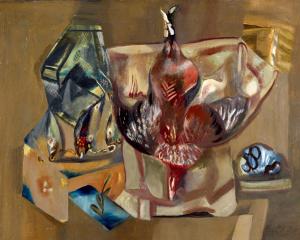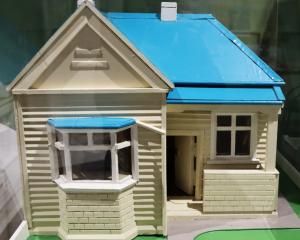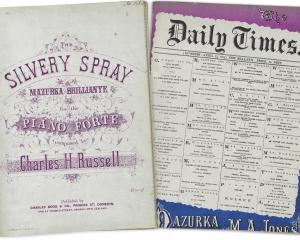There are collections within the collection at Olveston, Jenny Longstaff writes.
One of the many charms of a visit to Olveston, the Theomin family's historic home, is noticing the personal taste revealed in the interesting juxtaposition of items, reflecting the "magpie'' nature of collecting in the Victorian and Edwardian eras.
A concentration of this eclectic taste is featured in a small curiosity cabinet in the drawing room.
Many of us have areas in our homes - a display case perhaps, or just a shelf - dedicated to unusual finds and interesting objects evoking a sense of delight and rekindling memories.
In a simplified way, these originate from the kunst or wunderkammer, cabinets of curiosity or wonder-rooms, which were Renaissance-style small rooms filled with collections of prized items from the weird to the wonderful, to inspire the viewer with something to marvel at.
In the 16th and 17th centuries, before museums evolved, collections dedicated to the wonders of the world were the realm of the elite: royalty, aristocrats and academics.
Eventually zoological collections became curated, run by professionals instead of aristocratic amateurs, and the British Museum in London developed into a research institution, not merely a place to gawk at the rare and unusual.
In the Victorian era, the tradition of a personal collection reached the proliferating middle class and the popularity of the glass "curio cabinet'' soared.
Objects came from all corners of the known world and as well as being sources of scientific wonder and contemplation, collections were also designed to impress.
The accumulated curios in the Theomins' cabinet at Olveston reflect family interests and reveal historic, social, and recreational insights.
Items from days of empire and personal minor souvenirs await our inspection. Each item has a story to tell, about itself and about its owner, gifter, purchaser, collector.
Where is it from? When was it acquired? What is its significance? Is it valuable, in monetary terms or sentimental attachment?
Several silver items - snuffboxes, a visiting-card holder, a needle case, antique vinaigrettes, embroidery scissors - remind us of bygone social habits.
Other items reflect the family's interest in travel, the classics, archaeology, anthropology, nature, art and design.
There are "mummy beads'' from Egypt, a filigree Arabic "Hand of Fatima'' talisman, a jade elephant paperweight, a Toledo steel blade from Spain, a tiny silver Chinese sampan and a rickshaw.
Interest in the natural world is indicated by the inclusion of an opened shell with pearls, an animal's claw mounted as a pendant, 18 scallop shells nestled in a stack.
An item of jewellery, a necklace, shows an Etruscan influence from antiquity; there is a small, beautiful Tiffany vase of favrile glass; a hand-painted dressing mirror ... At Olveston Historic Home, past lives, past pleasures and personal treasures continue to delight.
- Jenny Longstaff is a housekeeper and tour guide at Olveston Historic Home.




![‘‘Neil’s Dandelion Coffee’’. [1910s-1930s?]. EPH-0179-HD-A/167, EPHEMERA COLLECTION, HOCKEN...](https://www.odt.co.nz/sites/default/files/styles/odt_landscape_small_related_stories/public/slideshow/node-3436487/2025/09/neils_dandelion_coffee.jpg?itok=fL42xLQ3)






